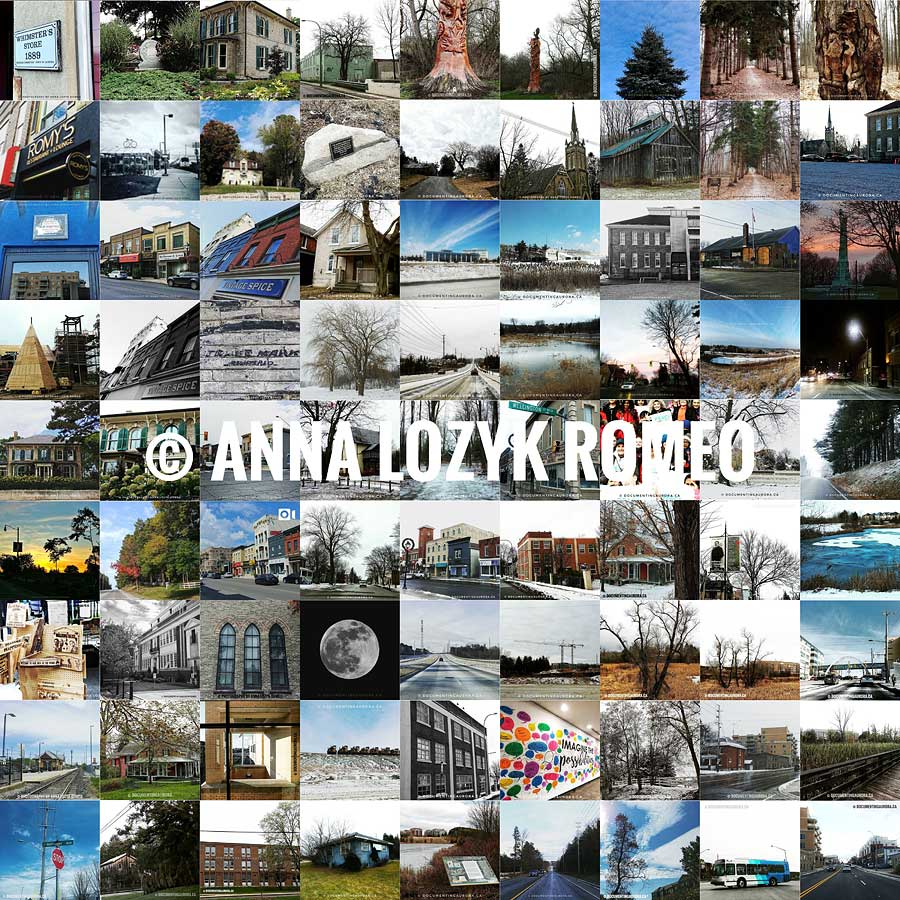‘documenting Aurora’ is a legacy project that was created with the purpose of capturing digital information about the ever changing Town of Aurora, Ontario beginning in its Sesquicentennial year 2013. One part of the project is to track changes to the landscapes, heritage buildings and sites of heritage value. The second part of the project is to track social, cultural, political and economic changes that affect everyday lives of the Town of Aurora community.
This project is a bit of an unconventional ‘history’ project because I am implementing creative ways to use digital tools to display attention-grabbing digital content. In addition, this was also a great opportunity to acknowledge the 150th Anniversary of the Town of Aurora, Ontario by marking in history all the Sesquicentennial events of 2013.
It is not my intention to re-write history of our town or repeat what has been written prior to 2013; however, it is my intention to capture information about our past through dialogues and conversations with people – perhaps a search for untold stories, hidden away photographs or videos.
My sole goal is to collect information in a digital format and then organize, archive and manage it accordingly. The end result will be digital content documenting the Town of Aurora in the form of essays, eBooks, photo, audio and video galleries in one central location.
Why start this digital legacy project?
As I have mentioned, one – it was a great opportunity to commemorate the Town of Aurora Sesquicentennial year by starting this ongoing legacy project that is going to hopefully record almost everything about the Town of Aurora beginning 2013 and beyond. However, there are in fact many other reasons.
“There are many ‘word of mouth’ stories in our community, but unwritten, and eventually forgotten.”
~ Anna Lozyk Romeo
Today technology is readily available to do so. Almost everyone has access to some kind of digital camera, mobile device, or tablet to visually record information in the form of photographs or videos. Many different ways to communicate or to share information or conversations/dialogues is readily available via social networking, blogs and/or emails. We all have stories to tell. However, this information is not in a central location. Personal accounts can be closed and information will be lost forever if not archived properly. The local newspapers are doing a great job providing us with news type information on a regular basis, but there are limitations due to the way that information is archived. In addition, digital storage in recent years has become inexpensive and tools to manage information at low costs are readily available to us.

In the next years to come, I can only speculate at this point, but I think that our local history of the Town of Aurora will be all about the people shaping our community. Existing artifacts and heritage buildings will continually need to be preserved. We don’t know how much will survive since nothing lasts forever. It is clear that preserving historical information digitally is economically viable. However, the process isn’t that simple, because even preserving digitally can be challenging. We must ensure that it is recorded in the most standard or common formats otherwise it may not be retrievable in the future or it needs to be regularly managed by updating and converting information to the latest formats. Historically you can see why printed media has been so universal to everyone’s eye, but in today’s world the downfalls with printed media are tremendous including physical storage and limited search capability, especially to today’s ‘fast find’ expectations.
“I think that our local history of the Town of Aurora will be all about the people shaping our community.“
~ Anna Lozyk Romeo
Another important reason to start this project is to fill in and avoid missing time gaps in our local history. What I mean is that what we are doing today to preserve our local history will be part of the history in the future, therefore this needs to be addressed as well. There are many ‘word of mouth’ stories in our community, but unwritten, and eventually forgotten. There is still a chance to fill in the blanks as the opportunities come up. This project is an opportunity to help us fill in the missing time gaps in our local history and an opportunity to start fresh (2013).